Home » Traveling to Hunt » Traveling on the Road Long Term with a Bird Dog
Traveling on the Road Long Term with a Bird Dog
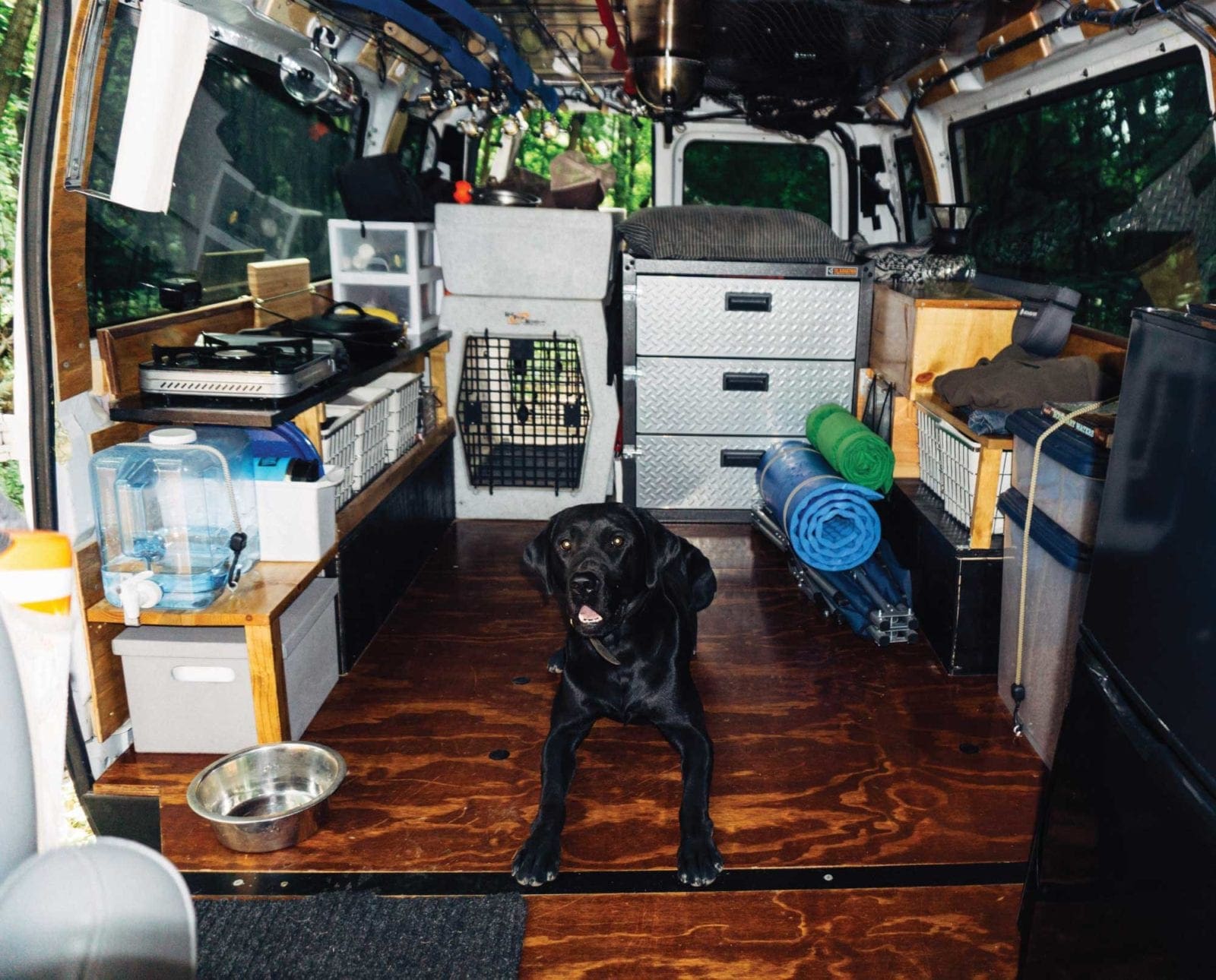
Scott Johnson is a first generation hunter with a lifelong…
Have you ever considered spending an entire bird season traveling the country?
On Sept. 1, 2017, Watson and I stood on the plains of Montana at sunrise about to start our first hunt of a trip I had dreamed of for years. Our itinerary was set: September sharptails in Montana, a full and glorious autumn in the grouse woods, November pheasants in Kansas, and quail in the deserts of Arizona—all of it started right here.
It had taken a year of hard work and planning to get us here, but I was confident we were ready for it. I had spent the summer turning a Ford E350 passenger van into a 66 1/2 square foot house full of hunting gear; a veritable upland dream machine for the two of us. There are many upland hunters who chase the seasons across the United States, but most of them carry on in far grander scale: Class A motorhomes, fancy dog trailers, destination lodges, and big teams of pointing dogs. Not us, though. Our adventure was minimalist by its nature but grand in its ambition, all hinging on one critical piece: Watson.
As we stood in that field of prairie grass, my beloved Labrador was a little over 4 1/2 years old, and he was my only dog in the game. I was going to need everything I had learned over our previous seasons to keep him afield for the next five months. Without him, I was just a guy in a van. With him, this would surely be the trip of a lifetime.
There are countless well-documented hazards in the fields and woods for our four-legged hunting partners. Dehydration, barbed wire fences, porcupines, snakes, cholla cactus—the list goes on. But sometimes their greatest enemy can be themselves. Watson takes his bird hunting life on at full speed, which is both fabulous and terrible at the same time. We had taken our lumps over the previous seasons. He took an old barbed wire fence at full speed once, and after a panicked drive to the nearest health store I learned a valuable lesson about keeping first aid supplies on hand. We had dealt with cut pads, splintered nails, even a porcupine quilling when he was a puppy. Each time, though, I had a nice comfortable home to take us back to in a city with nearby veterinary services. Out here, all we had was a well-equipped van.
Our time in Big Sky Country would be our first lesson as its vastness and early season heat beat us down. Big, wide-open spaces are hard on dogs in general, and even harder on muscular labradors. I had been keeping him hydrated, and kept a close eye on his pads as we learned this new game of prairie grouse hunting. Watson can at times suffer from bicipital tenosynovitis, which is when the sheath that surrounds a dog’s shoulder tendon becomes inflamed from overuse. We had been keeping our hunts to early mornings and evenings to stay away from the midday sun, but it was no use, and after 10 days our dream trip was sidelined with a limp. Both Watson and I tend to let our ambition cloud our judgment, and I couldn’t help but feel that I had missed some early warning signs that could have staved off this setback.
As we made our way back to Minnesota, I spent every break for gas treating his shoulder. I would let him out of his dog kennel, get a good little walk in and around whatever parking lot we had stopped at, then let him sprawl out on my cot with an ice pack pressed up against his ailing limb. By the time the ruffed grouse season opened, he was back in fighting shape.
I adopted a new post-hunt regimen for him after that experience. After the last hunt of the day, he gets fed, hydrated, and left to relax all over my super comfortable bed. When you live in a van full-time your bed is many things: sleeping space, office chair, and now it had taken on the role of canine lounger as well. Watson’s end-of-day meal is a hunting dog version of a feeding I learned from an avid sled dog owner. After a full day of hunting he gets 2 1/2 cups of food, two raw eggs, a glucosamine powder mixture to help his muscles and joints recover and a healthy splash of water to sneak some more hydration into him.
Our fall in the grouse woods of Minnesota would be derailed by a badly sliced pad. We were deep into a cover with a lot of glacial rock deposits when I noticed it. I called him to heel and chose a path back to the van that would take us through softer ground to prevent as much further damage as possible. We had fought this demon before. Many recommend super gluing such injuries, but that has never held up for us in the past. Instead, I choose to keep the cut treated with wound gel, covered with gauze held in place with tape, and then covered with a heavy dog boot. This has worked well for us, and after a week it was healed enough for us to resume limited action. Our van adventure would progress through October without any further setbacks. I kept a close eye on his field manners, and made sure to take full rest days during the week when I detected even the slightest bit of fatigue.
We would leave Minnesota for the November fields of Kansas in search of ring-necked pheasant and bobwhite quail. It was an unusually hot season there, but my lessons learned from the first two months of our journey would pay dividends. We hunted early and late on sunny days, breaking for lunch and naps in the van when the sun was at its hottest. We never hunted more than three or four days in a row, adjusting our rest days around the weather. If a storm front was coming in or there was heavy rain in the forecast, we would rest on those days to the fullest, lounging around like slugs and soaking in water and calories. We spent a full month in Kansas, and Watson was at full speed for all of it. We spent glorious days afield matching wits with over-pressured roosters and trying to pin down coveys of flighty public lands bobwhites.
When we headed home for the holiday season I was about as happy as a bird-dogging guy could be. One guy, his black lab, a van full of gear—all had kept us going out there in those vast fields without a hiccup.
Our last chapter was spent in the deserts of Arizona in search of Mearns Quail. If a brush-busting lab is out of his element in wide open prairie grass, then the desert might as well be another planet. We hunted Arizona much like we did Kansas and Montana, hitting the ground at the crack of first light, and getting back to the van as the sun brought too much heat to the ground. My mobile mini-house is set up with a solar powered electrical system to power, among many things, a mini refrigerator and some fans. The fans helped Watson stay cool during our midday breaks, while I usually opted for a nice cold beverage. We kept the same type of rest day rotation, and as such we were able to keep his feet healthy and his ailing shoulder at bay. Because of our long season afield I chose not to make him run with boots on (often recommended for desert hunting) and found that his pads were up to the task. Admittedly, we struggled to reliably find birds with our limited time afield, but when we got our cover choices right we found plenty to put smiles on both our faces, and we were able to do it without any injuries.
On Feb. 11, the final day of the Arizona quail season, we harvested our last bird of the year. It was a beautiful male quail taken in the closing hour before sundown. We had been afield for only a few hours, coming up empty in our first cover. I could see Watson was starting to tire, but these were the last moments of our season, and there would be plenty of time to rest in the coming months. A small breeze betrayed the covey, bringing their scent cone to his nose from about 60 yards away. I followed as he worked down a long dry washout, eventually putting them to flight from beneath a mesquite tree. As he brought the bird to hand I couldn’t tell who was more tired, him or me, but we were equally happy.
We finished our journey there, in the desert, five and a half months after we had first set out in the prairies of Montana. I had piled Watson and my entire life into a van and set out on a trip that I dreamed of for years. Hunting gear, dog food, water—you name it, we had it with us, and it took everything we had to stay out there as long as we could. When the season starts in your part of the upland world, remember that it’s our job to keep our dogs afield as much as possible. They don’t know their limits. If your dog is anything like mine it will push itself past them. A little bit of preparation goes a long way in the upland world, and a lot of preparation goes even further. Be sure to have more water than you’ll ever think you need. I recommend always having food along for post hunt feedings as well, even if you’re out for just a quick cover close to home.
Have a dog first aid kit that would impress a surgeon. Wound gel, gauze pads, bandage tape, suture kit, spare dog booties, even the superglue. The internet is full of canine first aid kits; I suggest using one as a starting point and adding anything you can think of. Have emergency vet info on you, too, and if you’re traveling to a new area do a quick search of 24-hour emergency vets in that region ahead of time. If you live in snake country, find a trainer who does snake-avoidance training, and talk to your vet about vaccinations for snake venom.
Most importantly, make sure you pay close attention to your dog. Don’t push them too hard; they’ll do that on their own. Make them rest when they need it, especially when you’re hunting multiple days in a row. We only get so many seasons with our beloved companions, and we need every minute of them we can get.
Scott Johnson is a first generation hunter with a lifelong passion for the outdoors. Originally a fisherman and grouse hunter from Norther Minnesota, he spends his seasons traveling across the country in search of upland birds and waterfowl with his beloved labrador Watson. He hunts and lives out of a converted van that he purpose built for his pursuits, and can be found anywhere from the Midwest to the deserts of Arizona, and as far north as Alaska.




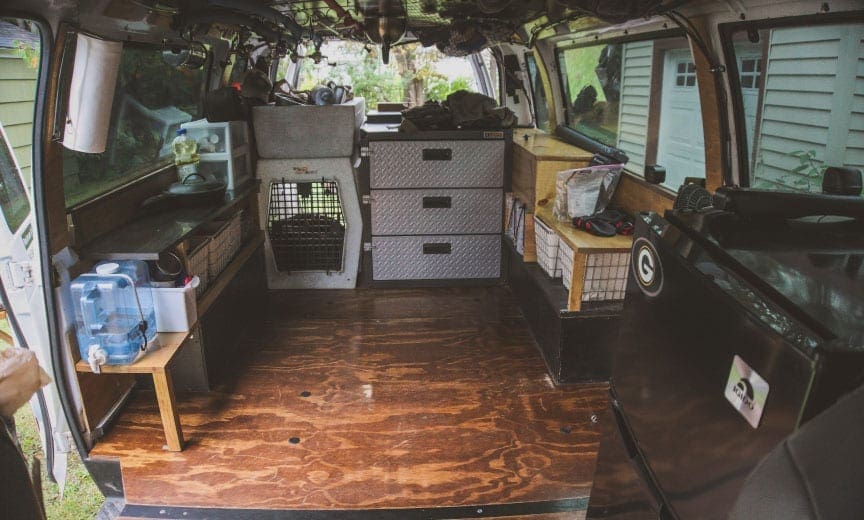
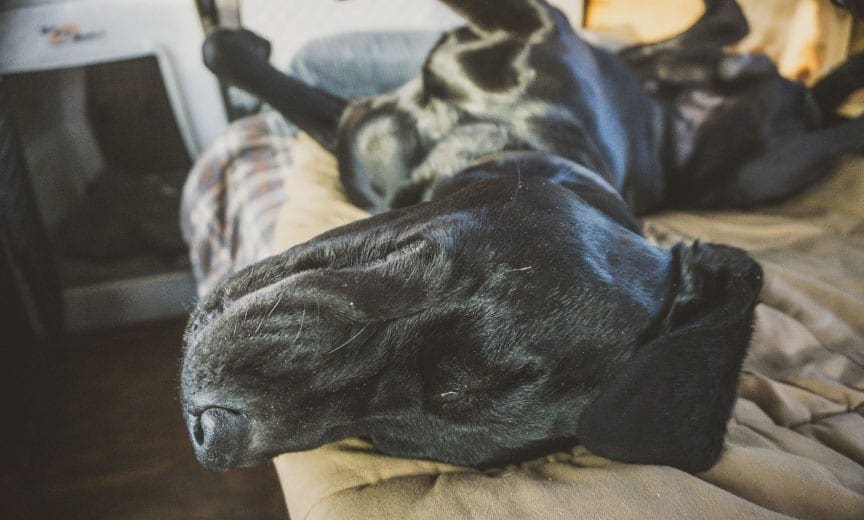
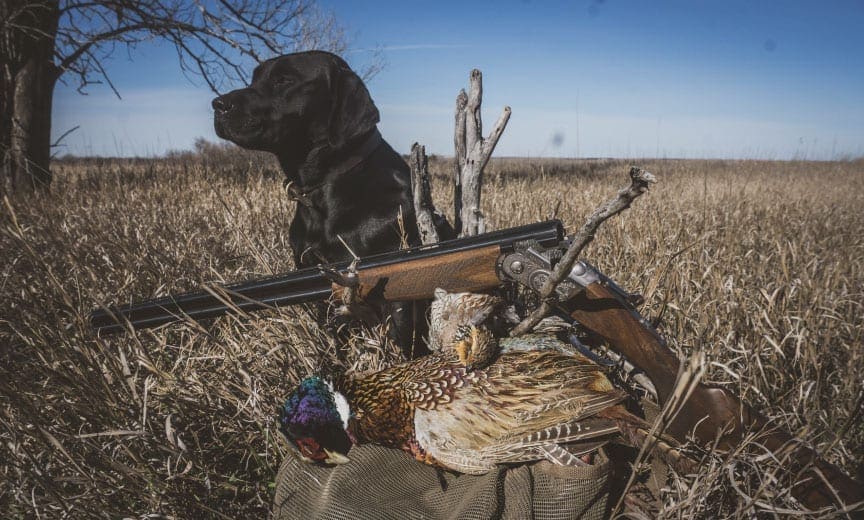
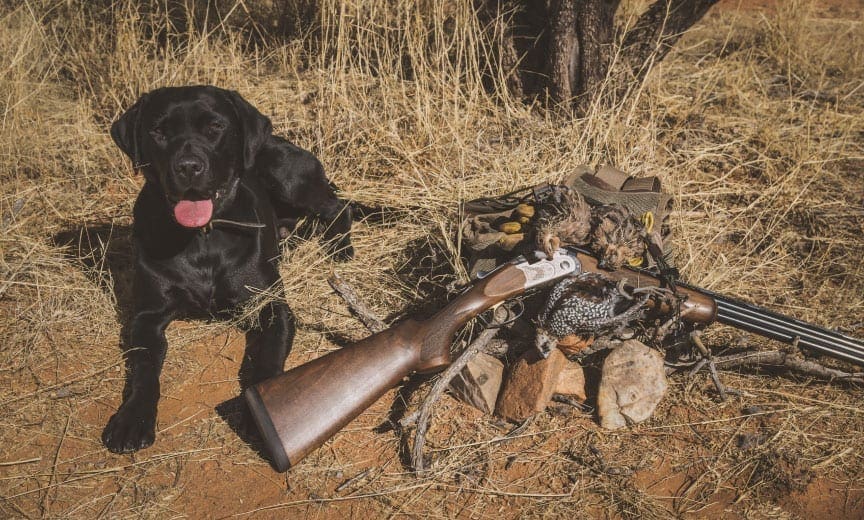
Great article. It inspired me to talk to my fiancé about getting a van for our hunting adventures. She’s been getting pretty into hunting with me and it’s starting to take us all over the place.
It’s a great way to do it. Like all forms of mobile living arrangements it has it’s pros and cons, but in total it’s a really convenient way to go. Follow me on Instagram or Facebook @scottandwatson and feel free to reach out if you have any questions.
wow, don’t know what to say. now I want to go on a road trip. Part 2 ? maybe more info ?
good read…
Scott, you stole my dream. Except, in my dream I start in Saskatchewan, nd, sd, ne, ks, tx, and az. Great info on the first aid kit for my two gsps.
Great read! Definitely a dream of mine to do something like this. Also reminded me to go ahead and put together a med kit for my dog.
Scott, Great story – I am jealous. Dogs, particularly labs do not moderate themselves very well. They will run themselves into the ground if you let them. As a result, I am a proponent of traveling with 2 dogs which allows you to give them more of a break when needed.
Wish you had talked some about your air conditioning when on the road. I haven’t found a reasonable costing solution for my fiberglass pickup shell. I have resorted to wetting my shorthairs down while driving the desert blacktops in September. Temps in the triple digits are common.